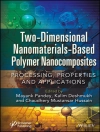Nanoscience, nanotechnologies and the laws of quantum physics are
sources of disruptive innovation that open up new fields of application.
Quantum engineering enables the development of very sensitive
materials, sensor measurement systems and computers. Quantum
computing, which is based on two-level systems, makes it possible to
manufacture computers with high computational power.
This book provides essential knowledge and culminates with an industrial
application of quantum engineering and nanotechnologies. It presents
optical systems for measuring at the nanoscale, as well as quantum
physics models that describe how a two-state system interacts with its
environment. The concept of spin and its derivation from the Dirac
equation is also explored, while theoretical foundations and example
applications aid in understanding how a quantum gate works. Application
of the reliability-based design optimization (RBDO) method of mechanical
structures is implemented, in order to ensure reliability of estimates from
the measurement of mechanical properties of carbon nanotube
structures.
This book provides valuable support for teachers and researchers but is
also intended for engineering students, working engineers and Master s
students.
विषयसूची
Preface ix
Introduction xiii
Chapter 1. Measurement Systems Using Polarized Light 1
1.1. Introduction 1
1.2. Matrix optics 2
1.3. Photon emission and detection 12
1.4. Application exercises on interferometry 16
1.4.1. Propagation of electromagnetic waves in a Fabry-Pérot cavity 18
1.4.2. Propagation of electromagnetic waves in a material 19
1.4.3. Interferometry and optical lambda meter 21
1.4.4. The homodyne interferometer and refractometer 34
1.4.5. The heterodyne interferometer 40
1.4.6. Application exercises on ellipsometry 51
1.5. Appendices 56
1.5.1. Conventions used for Jones vectors and Jones ABCD matrices 56
1.5.2. 2×2 transfer dies 59
1.5.3. 2×2 matrix multiplication 59
1.5.4. Trigonometric forms 60
1.5.5. Solution by MATLAB (exercises 1.4.3, 1.4.4 and 1.4.5) 61
1.6. Conclusion 66
Chapter 2. Quantum-scale Interaction 67
2.1. Introduction 67
2.2. The spin through the Dirac equation 69
2.2.1. Theoretical background 69
2.2.2. Application: the Dirac equation and Pauli matrices 74
2.3. The density matrix for a two-level laser system 105
2.3.1. Definition of the density matrix 106
2.3.2. Density matrix properties 110
2.3.3. Equation of motion of the density matrix 113
2.3.4. Application to a two-level system 116
2.4. Ising’s phenomenological model for cooperative effects 123
2.4.1. The Ising 1D model 124
Chapter 3. Quantum Optics and Quantum Computers 135
3.1. Introduction 135
3.2. Polarized light in quantum mechanics 136
3.3. Introduction to quantum computers 140
3.4. Preparing a qubit 158
3.4.1. Application of the Bloch sphere 158
3.5. Application: interaction of a qubit with a classical field 172
3.5.1. Answer to question 1 173
3.5.2. Answer to question 2 176
3.6. Applying Ramsey fringes to evaluate the duration of phase coherence 181
3.6.1. Answer to question 1 181
3.6.2. Answer to question 2 183
Chapter 4. Reliability-based Design Optimization of Structures 185
4.1. Introduction 185
4.2. Deterministic optimization 186
4.3. Reliability analysis 187
4.3.1. Optimal conditions 189
4.4. Reliability-based design optimization 191
4.4.1. The objective function 192
4.4.2. Taking into account the total cost 192
4.4.3. Design variables 193
4.4.4. Response of a system by RBDO 193
4.4.5. Limit states 194
4.4.6. Solving methods 194
4.5. Applications 194
4.5.1. Application on a bending beam 194
4.5.2. Application on a circular plate with different thicknesses 196
4.5.3. Application: hook A 201
4.5.4. Application: optimization of the materials of an electronic board 211
4.6. Reliability-based design optimization in nanotechnology 222
4.6.1. Thin-film SWCNT structures 222
4.6.2. Digital model of thin-film SWCNT structures 224
4.6.3. Numerical results 225
4.7. Conclusion 231
Appendix 233
References 237
Index 245
लेखक के बारे में
Pierre Richard Dahoo is Professor and Holder of the Chair of Materials
Simulation and Engineering at the University of Versailles Saint-Quentin
in France. He is Director of Institut des Sciences et Techniques des
Yvelines and a specialist in modeling and spectroscopy at the LATMOS
laboratory of the CNRS.
Philippe Pougnet is a former expert in reliability and the technologyproduct-process of embedded mechatronic systems. He graduated from
Universite Grenoble Alpes and Grenoble INP in France.
Abdelkhalak El Hami is Professor at the Institut National des Sciences
Appliquees (INSA-Rouen Normandie) in France and is in charge of the
Normandy Conservatoire National des Arts et Metiers (CNAM) Chair of
Mechanics, as well as several European pedagogical projects.












